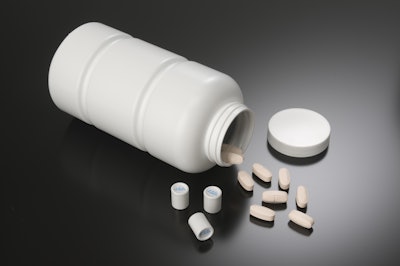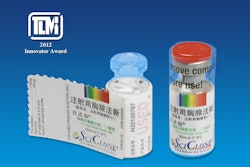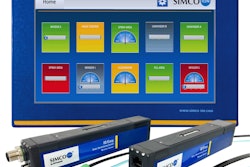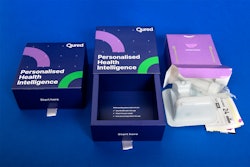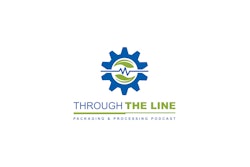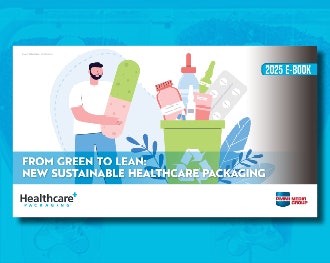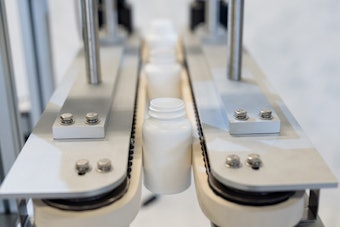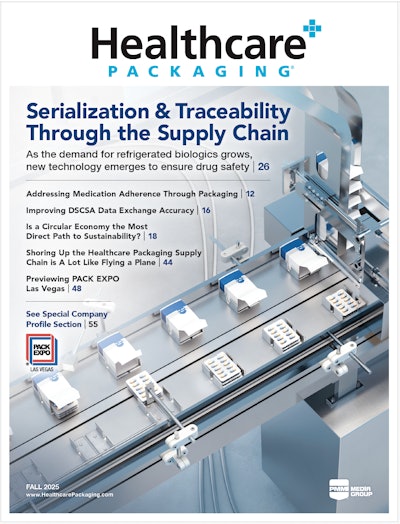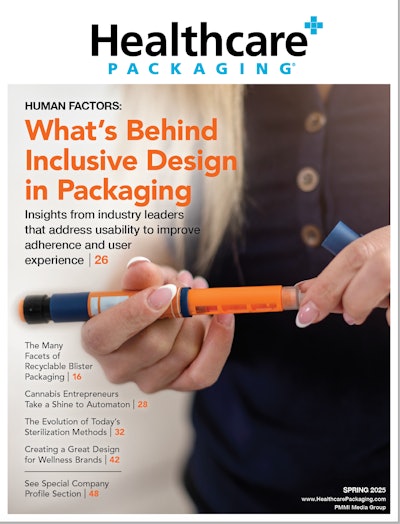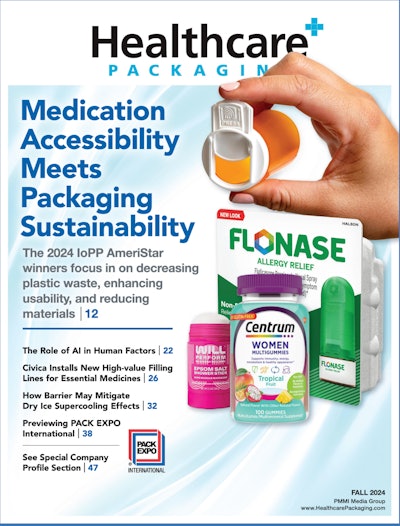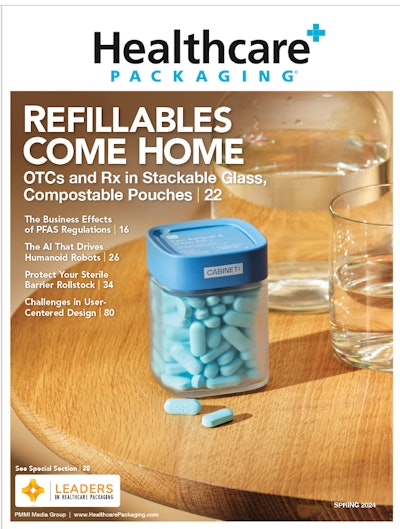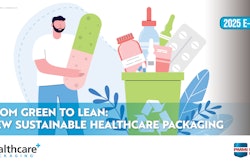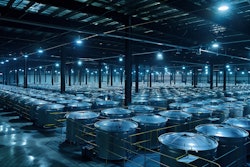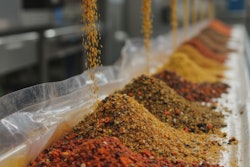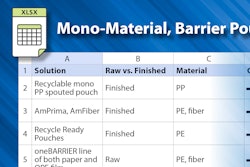After hydrolytic degradation, oxidative degradation is one of the most common modes of degradation addressed by formulators to protect a drug. As moisture is often a catalyst for oxidative degradation, the traditional approach of keeping the molecules in a low-moisture environment may sometimes resolve the problem of oxidation. In contrast to hydrolysis, oxidative mechanisms are complex and often trigger irreversible degradation of the drug compound once initiated.
Recently, however, the need for effective oxygen absorption solutions has been intensified by three trends:
1. The demand for increased shelf life allowing for cost optimization in drug manufacturing and distribution.
2. A higher proportion of molecules in the drug pipeline in Classes II and IV. These classes of molecules are often formulated with new galenic forms, which make them more sensitive to oxygen.
3. Potentially greater scrutiny by the U.S. Food and Drug Administration (FDA) regarding maintenance of potency to the end of shelf life.
Effects of oxygen on sensitive drug products
Oxygen is a well-known source of degradation in many types of pharmaceuticals. When drugs are packaged, oxygen that was trapped in the container headspace during the filling process or that enters the container from the outer atmosphere during shelf storage can cause adverse effects, most critically molecular changes leading to loss of potency. As outlined by the U.S. Pharmacopeia, the presence of oxygen can degrade pharmaceuticals by causing color changes, odors, and generation of by-products such as peroxides and radicals. In the worst case, the oxidative degradation may even be a source for adverse pharmacological effects.
The molecular structures most likely to oxidize are those with a hydroxyl group directly bonded to an aromatic ring, amide and peptide groups, conjugated dienes, heterocyclic aromatic rings, nitroso and nitrite derivatives, or aldehydes (e.g., flavorings). Additionally, even if the molecules are not sensitive to oxygen directly, the formulation used for drug delivery can often modify the sensitivity of the final product.
Ways to prevent oxidative degradation
To meet stability challenges, manufacturers of pharmaceuticals require new solutions that can deliver superior protection against oxygen at an optimized cost. Protection against oxygen degradation can be addressed by modifying the active pharmaceutical ingredient (API) itself or by adjusting the formulation with, for example, antioxidants or specific coatings.
Alternatively, an oxygen scavenger may be used in the drug packaging. Achieving full control of the oxygen level within the headspace of a drug’s primary packaging may help to avoid multiple iterations in drug formulations, delays in development and costly failures in stability testing, thus saving time for the manufacturer.
Catalysts for oxidative drug degradation
Answering the challenge of preserving a drug product from oxidative degradation requires an understanding of the mechanism leading to a loss in performance properties.
Before considering protection against oxygen, it is important to evaluate a drug’s reaction to humidity and determine the need for a desiccant. Resolving the problem of humidity sometimes also addresses the problem of oxidation, since the rate of oxidative degradation often slows at lower humidity levels.
However, if the need for active protection against oxygen has been established, the following should be determined:
• Critical level of relative humidity in the packaging’s headspace to avoid exponential increase in the oxidative degradation rate. This rate depends to a significant degree on the relative humidity of the headspace.
• Oxygen concentration threshold to be maintained to avoid an oxidation reaction.
• Time allowed after filling the goods to lower the oxygen level below its critical threshold.
Selection and dosage of an oxygen scavenger cannot be based solely on the specification value for scavenging capacity. Whether a scavenger can adequately protect a drug product from oxidation depends on its ability to quickly lower the oxygen level below the critical concentration threshold in relevant use conditions such as temperature and humidity.
Oxygen scavengers in primary packaging
There are several types of oxygen absorbers used for a variety of applications. Traditional oxygen absorbers—often used in the food industry and based on metal powder, enzymes, or ascorbic acid—carry a major drawback since they need moisture to perform properly. The requirement for moisture precludes their use in a dry packaging environment, as moisture is another major pathway to degradation of the drug product.
Unlike food applications where the products often have a high water content, pharmaceuticals usually do not contain significant water content required to cause the oxygen absorption reaction. Second, to maintain their stability, most pharmaceuticals have to be kept in dry conditions. They often utilize a desiccant to remove any headspace moisture and absorb moisture that enters the package from the outer atmosphere.
With iron systems, oxygen present in a package’s headspace is consumed when the iron reacts with the moisture and oxygen.
This corrosion reaction of iron requires both humidity and oxygen, and the amount of oxygen absorbed is directly correlated to the amount of moisture available to the iron. In other words, moisture and oxygen need to be present in the right quantities in order to maintain a packaging headspace free of both oxygen and moisture. Where oxygen and moisture are not provided in the right proportion, undesired levels of either gas inside the container could result.
Moisture to initiate the process may be provided by the iron-based scavenger itself. However, the iron compound is dependent upon moisture entering to the package during shelf life in order to continue scavenging oxygen. The resulting levels for relative humidity and oxygen concentration inside the package headspace will therefore depend on the specific values of oxygen transmission rate (OTR) and moisture vapor transmission rate (MVTR) of the tested container under provided climatic conditions.
Because MVTR and OTR are both strongly dependent on environmental conditions, they may vary in different proportion from one climatic condition to the next. Hence, the relative levels for humidity and oxygen established inside a package when using a specific dosage of iron-based scavenger would also differ in different climatic conditions.
For example, results obtained under accelerated drug stability tests may not be transposable to other climatic conditions. Under real conditions, where temperature and humidity levels can vary greatly, a situation could arise where there is not enough moisture to “feed” the scavenger and facilitate the reaction, leaving the drug exposed to higher oxygen levels. Alternatively, oxygen could be missed, leaving increased relative humidity.
Similarly, ascorbic acid-based absorbers require moisture and can produce colored decomposition products. Further, they have low absorption capacity, resulting in a reduced ability to protect the drug from moisture or the need to insert an inordinate amount of absorber.
Moisture is also a requirement for enzyme-based absorbers.
Further, in considering system costs, it should be noted that the cost per unit of absorption under given test conditions is more important than the cost per weight unit of absorber.
Humidity-neutral oxygen absorber solves multiple challenges
As established, the degradation rate of a drug product is influenced by humidity level and oxygen concentration within the packaging’s headspace.
Traditional scavengers need moisture to remove the oxygen but too much moisture is the first factor in drug degradation. Using such systems for oxidative drug protection is like walking a tightrope, because slight changes in conditions will throw off the balance needed for efficient oxygen absorption.
To avoid dependency between moisture and oxygen management, laboratories can consider an organic polymer-based, humidity-neutral oxygen scavenger that offer several advantages:
• The ability to work under conditions ranging from 0 –to 100% relative humidity
• High performance at an affordable cost
• Simple configurations (canisters and packets) that are compatible with standard filling lines.
• The ability to work in tandem with desiccants, or even be mixed with desiccants within the same packet or canister
Thus, the effects of environmental conditions (fluctuations of temperature or humidity in real-world use) are easier to anticipate. The conditions in a package’s headspace can be driven by the capacity of each individual sorbent.
PharmaKeep® is jointly marketed by Clariant and Mitsubishi Gas Chemical Company. Its oxygen absorption mechanism is based on the chemical reaction of C=C double bonds with oxygen.The reaction is followed by chain scission or the breaking of the molecular bond into side groups.
This technology creates an oxygen-free packaging environment that can help to prolong the potency and maintain the color of pharmaceuticals over an extended shelf life. It continues to absorb even under low oxygen levels and low temperatures, although performance can be impacted by both conditions.
Oxygen scavenging rates also remain unchanged independent of humidity level inside the package. Under ambient conditions, one 1g Pharmakeep canister will remove substantially all oxygen contained in the headspace of a 100cc container.
New trends call for increased protection against oxygen
One catalyst driving the need for oxygen protection is economics. To optimize drug production and profitability, pharmaceutical companies may seek to produce larger batches of a given drug at one time. However, larger quantities call for longer shelf life due to the need for warehousing prior to sale. Extended time in the warehouse, in turn, can lead to increased risk of degradation.
Another important trend is the increase in development of Class II and IV molecules, which are often formulated with a specific galenic to improve the solubility and bioavailability of the drug. For instance, one way to manage these types of molecules is a lipophilic formulation, which generally exhibits higher sensitivity to oxygen. Also, many molecules in the pipeline contain protein derivatives and this type of structure increases the sensitivity to oxygen.
Further, the FDA may be paying closer attention to the potency of drugs at the end of their shelf life. One example is thyroid drugs containing levothyroxine, which are particularly susceptible to oxygen and moisture degradation. In 2009, new FDA provisions went into effect to narrow the range of potency of levothyroxine throughout its entire shelf life because it was discovered that levothyroxine potency is not stable when exposed to excess oxygen. Specifically, the FDA specifications require levothyroxine sodium medications to maintain potency levels between 95 and 105% until their expiration date, whereas the previous range was 90 to 110% potency.
In a press announcement, the agency stated, “The U.S. Food and Drug Administration is tightening the potency specifications for levothyroxine sodium, used to treat underactive thyroid glands and other thyroid conditions, to ensure the drug retains its potency over its entire shelf life. This action is being taken in response to concerns that the potency of the drug may deteriorate prior to its expiration date.”
Conclusion
Oxidative degradation is a common issue that must be addressed by many pharmaceutical manufacturers. However, the method chosen often carries undesirable side effects, from high costs to uneven performance. Use of a polymer-based scavenger that requires no moisture for activation or operation and does not involve special equipment or secondary steps in production can resolve many of these issues, while providing the flexibility to add a desiccant to the packaging. As manufacturers face new business and regulatory challenges, this technology can help keep costs down while contributing to maintenance of drug potency and other properties under extended and variable storage and shelf conditions. Partnering with an expert in controlled atmosphere packaging can help formulators evaluate all possible options—beyond those available in formulation—for keeping their drug compounds within appropriate design parameters.
PharmaKeep® is a registered trademark of Mitsubishi Gas Chemical
References:
[1] Crowley P, Martini LG. Drug-Exicipient Interactions. Pharmaceutical Technology. 2001; 2(6): 237-243.
[1] Mahajan R, Templeton A, Harman A, et.al. The Effect of Inert Atmospheric Packaging on Oxidative Degradation in Formulated Granules. Pharmaceutical Research. 2005; 22(1):128-140.
[1] Shomon, Mary. Thyroid Drug Potency is Being Tightened: FDA Changes Specs for Levothyroxine. October 4, 2007. http://thyroid.about.com/od/thyroiddrugstreatments/a/fdapotency2007.htm. Accessed September 20, 2012.
[1] FDA Acts to Ensure Thyroid Drugs Don’t Lose Potency Before Expiration Date. U.S. Food and Drug Administration. October 3, 2007. http://www.fda.gov/NewsEvents/Newsroom/PressAnnouncements/2007/ucm109000.htm. Accessed September 20, 2012.
--Article provided by Valère Logel, Global Head of Development—Clariant Performance Packaging, and Elisa Le Floch, Ph.D. Pharmacist, Business Development Manager—Clariant Performance Packaging.
Shown in the photo here: PharmaKeep® canisters are pictured alongside Clariant’s Oxy-Guard® multi-layer oxygen barrier bottle.
